By Andrew M. Scott
To the Latins they were Gauls; to the Greeks they were the keatoi (Keltoi), or Celts. A warrior people who at one time roamed Europe from Britain to the Black Sea, Celts reached the height of their power and cultural influence around the 2nd century bc. Their prowess in battle was well known to the ancients who, after the sack of Rome in 390 bc and the plundering of Delphi in 279 bc, quickly learned to fear the terror Gallicus. Aristotle wrote, “We have no word for a man that is excessively fearless … as they say of the Celts.”
Celtic battle frenzy was documented by both the Romans and Greeks. After the raid on Delphi, the Greek Pausanias reported: “On they marched against their enemies with the unreasoning fury and passion of brutes. Slashed with axe or sword they kept their desperation while they still breathed; pierced by arrow or javelin, they did not abate of their passion so long as life remained. Some drew out of the wounds the spears, by which they had been hit, and threw them at the Greeks or used them in close fighting.”
Although not as technologically advanced in martial matters as the Greeks or Romans, the Celts nonetheless ably used the weapons of the day, including chariots.
Celts neither invented nor monopolized chariots. Likely the two-wheeled chariot was first used by the Hurrians of northern Syria, who adapted the four-wheeled Mesopotamian war-wagon into the lighter, faster vehicle around 1700 bc. The first battle in history that can be dated and located, Megiddo in 1469 bc, is also our first recorded account of the use of the battle chariot.
It is not certain when the Celts gained this valuable technology. Evidence of early Celtic chariot use is gleaned primarily from the excavation of graves of noble warriors. Around the 7th and 6th centuries bc, the Celtic elite from southern Germany to Bohemia were buried atop a four-wheeled wagon. As the use of the funeral wagon spread westward, its use in burials became somewhat more common, appearing in the graves of less affluent persons. But archaeologists do not know what role, if any, these wagons played in life, whether for war or agriculture.
Beginning around the 3rd century bc, Celts of the regions around the Marne and the Moselle Rivers began burying their chieftains in light, two-wheeled chariots with their sword, shield, spears, and drinking vessels. Similar chariot graves from this era are also found in the British coastal regions of Yorkshire. The evidence for the use of these vehicles is clear. A Roman coin from 110 bc dramatically depicts the naked Gallic warrior-king Bituitus of the Averni casting spears from his chariot. And documentary evidence of the chariot in combat on the European continent is left to us by the Roman poet Propertius. In describing the fighting between the forces of Republican Rome and 30,000 howling Celtic warriors in 222 bc, Propertius depicts the chieftain Viridomar “clothed in striped trousers” hurling javelins from his chariot with deadly accuracy. In fact, many of the Latin words for chariot—carpentium, carrus, essendum—have Gaulish roots.
The use of chariots in combat in Gaul apparently died out before Caesar’s campaign of the 50s bc, because Caesar makes no mention of them—though he did of Gallic cavalry—in his Gallic Wars. But chariots certainly remained in Britain—though few have been found there—into the Caesarian era and beyond, because they are included in the writings of Caesar, Tacitus, and in the old Irish epic the Táin Bó Cuailnge (The Cattle Raid of Cooley) composed in part around the 2nd century ad. From these sources we can compile a fairly accurate description of the Celtic war-chariot.
It was built for speed. It was of light construction, composed of a wooden platform roughly three feet square resting upon an axle. The platform was enclosed on two sides only, often by a pair of curved loops of bent wood or a single semicircle of wicker work; the front open to allow handling of the horses, the rear to allow easy dismount. The platform was joined to its twin mounts by a single ridgepole. The type of wood used for the burial in eastern Yorkshire appears to have had an oak shaft, while the Táin Bó Cuailnge describes a chariot shaft cut from a holly tree, thus sacrificing strength for flexibility and lightness. This ridgepole terminated in a yoke that lay upon the shoulders of two ponies, and was probably fastened to them by leather bands. The two spoked wheels, about two-and-a-half to three feet in diameter, were bound in iron tires.
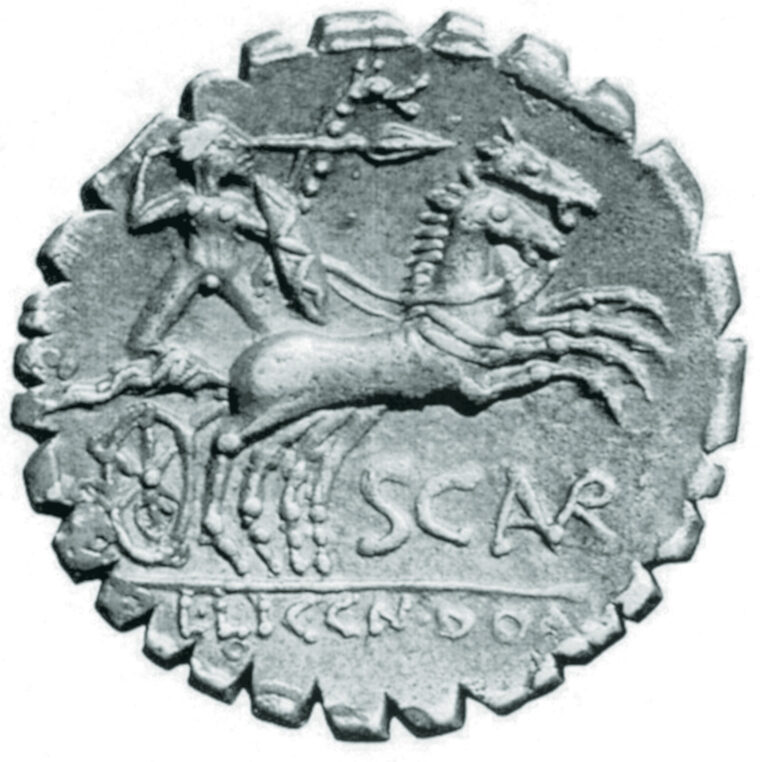
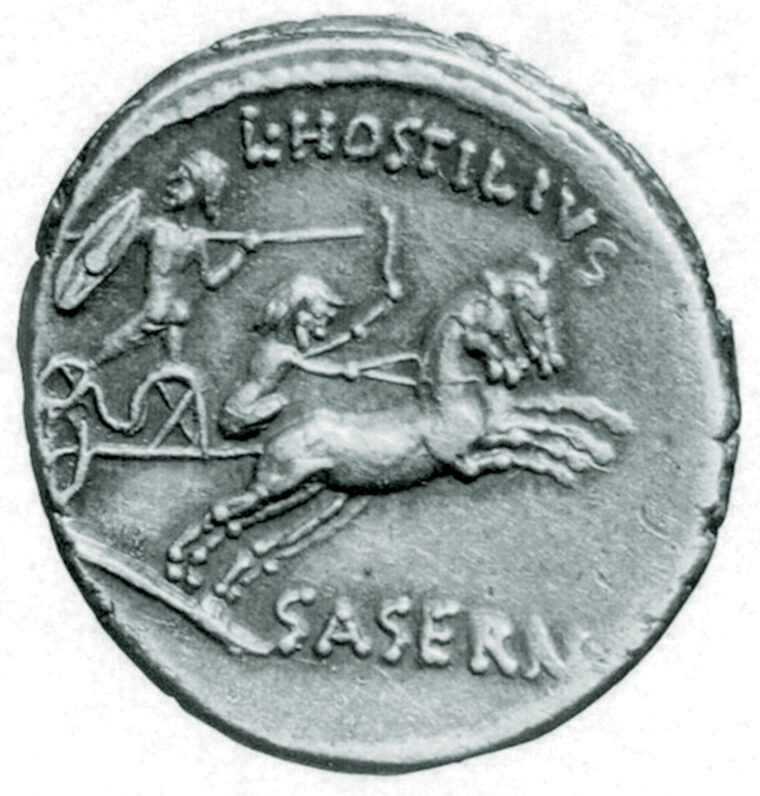
The swift movement and flexibility of this style of chariot and the skill of its driver is encountered repeatedly in the documentary evidence. Caesar wrote in Book IV of his Gallic Wars that Celtic charioteers “combine the mobility of cavalry with the staying power of infantry; and by daily training and practice they attain such proficiency that even on a steep incline they are able to control the horses at full gallop, and to check and turn them at a moment. They can run along the chariot pole, stand on the yoke, and get back into the chariot as quick as lighting.” In the Táin Bó Cuailnge, Irish chariot warriors are depicted attempting to leap a fallen oak tree in their vehicles, though this may indeed be a storyteller’s invention.
The Celtic war-chariot was pulled by two horses. No ordinary farm animal would suffice because the chariot was the contrivance of the warrior aristocracy. The importance of horses to the Celtic warrior is evident by the frequency with which they appear on Celtic coinage and by their frequent absence from chariot graves: while the chariot and weapons would follow the deceased to the earth, the horse was too valuable to sacrifice.
For all its importance, the Celtic war-horse was not the large mount of the medieval knight. Rather, in the British Isles it is believed to have been a breed much smaller and heartier than the modern thoroughbred, related perhaps to the Highland pony of Scotland, the Exmoor pony found on the moors of Somerset and Devonshire, or the Connamara pony of the west coast of Ireland. While a modern horse may stand 17 to 20 hands high, the Celtic pony was no larger than 12 to 15 hands. Short-legged, shaggy, and commonly dun-colored, these horses were known for their endurance and surefootedness.
The animals were probably attached to the chariot yoke by a leather strap that passed around the body behind the forelegs and another that crossed in front of the chest. These would allow the ponies to pull the vehicle without causing strangulation and, even broken, would prevent the ridgepole from sliding forward.
The Celtic chariot served two purposes in battle: conveying elite warriors from one point on a battlefield to another, and serving as fighting platforms from which to engage the enemy. The use of chariots’ speed to transport warriors was perhaps the foremost benefit of the vehicle. When Caesar made his first landings in Britain at the onset of winter 55 bc, he was faced with an opposing force of Celtic cavalry and chariot warriors who had, owing to their speed, arrived at the beachhead before their own infantry. In opposing the Roman disembarkation, the chariots were able to prevent for a time any substantial landing by racing around the legionnaires and hurling javelins into their flanks.
Caesar wrote that “these perils frightened our soldiers who were quite unaccustomed to battles of this kind.” According to most classical accounts, the chariot was able to place the warrior deep into the midst of the enemy “making their way between the squadrons of their own cavalry,” as Caesar wrote. The charioteer then withdrew to a safe distance to watch, ever ready to retrieve his warrior and race him to another part of the battlefield as needed.
While most combat by chariot warriors was done on foot—Diodorus Siculus writing sometime around the years 60 to 30 bc recorded in his History that the chieftains would “descend from the chariot [and] join battle with their swords”—the chariot itself could also serve as an effective fighting platform. Combat was always joined first by chariots, Caesar wrote. Celts in chariots began “by driving all over the field hurling javelins, and generally the terror inspired by the horses and the noise of the wheels are sufficient to throw their opponents’ ranks into disorder.” The Táin Bó Cuailnge, though prone to poetic exaggeration, represents in its many tales a number of missile weapons carried in the chariot, including small and long spears, darts, and light javelins. In the epic, the Ulster champion Cúchulainn often uses to deadly effect a sling from his chariot. In this capacity, the chariot enables the warrior not only to close the distance between himself and the enemy, but also to bring against him far more weapons than could be carried by a single footman or mounted warrior.
Although most evidence is of the use of missile weapons from the vehicle, there is some evidence, though scant, of fighting with chariots themselves. In the Táin Bó Cuailnge, the hero Cúchulainn prepares to fight his foster brother Ferdia. Both are equally skilled, and the duel lasts for a number of days. At one point, the choice of weapons falls to Cúchulainn. He chooses “our big, burdensome stabbing-spears.… Let our horses be brought and the chariots yoked. Today we’ll fight with horse and chariot.” The fight lasts all day until Ferdia calls off the contest, “for our horses are spent and our charioteers dazed.” While the Ulster hero clearly mentions a large spear, the repeated references to chariots beg the question: Does all this signify a Celtic chariot joust?
The idea of the Celtic chariot as a weapon itself does not end there. Anyone who has gazed up at Thomas Thorncroft’s bronze statue of the British warrior-queen Boudicca, standing before the House of Commons in London, has beheld the sight of the fearsome female warrior at the helm of a chariot with an offensive capability: scythed wheels. The use of metal scythes on chariot axles as an added means of attack was reportedly used by the Persians, but no archaeological evidence exists that slashing wheels were ever used by either the rebel Boudicca or any Celtic peoples.
Once again, however, the oral and literary traditions in the Táin Bó Cuailnge suggest what the physical records do not. The text mentions a “sickle chariot” in which “every inch … bristled. Every angle corner, front and rear, was a tearing place.” It “bristled with points of iron and narrow blades, with hooks and hard prongs and heroic frontal spikes, with ripping instruments and tearing nails on its straps and loops and cords.”
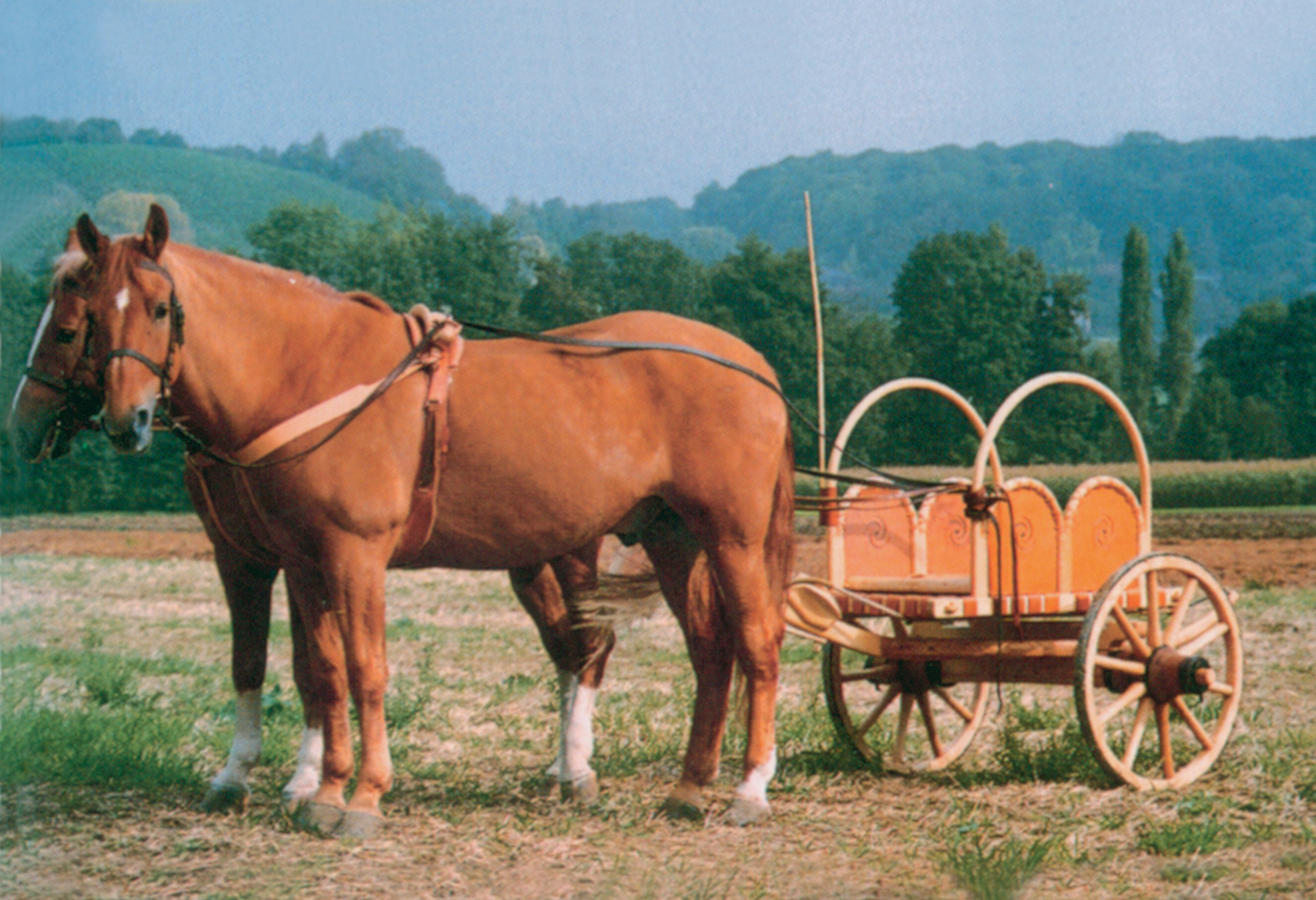
The horses themselves are described as being covered with iron armor plate, “covered from head to foot with spears and spit-points, blades and barbs.” When, in the ancient tale, this war machine is driven through crowds of enemies, it leaves hundreds dead. If such a vehicle ever existed, it would lose much of what made the chariot such an effective tool—speed and agility. Although the lack of physical evidence for such a chariot suggests it existed only in the imagination of a bard, the Romans thought enough of the stories to set a scythed chariot apart from other vehicles with its own word—covinnus.
Charioteers held a special place in the Celtic warrior hierarchy, not unlike that of a squire to a medieval knight. Diodorus Siculus recorded in his History that the charioteer was “chosen from among the poorer classes.” According to the Táin Bó Cuailnge, the charioteer was outside the boundaries of battle—a helper in the fight but a noncombatant himself. When, in that story, the three warrior sons of Gárach—Lon, Ualu, and Diliu—arm their charioteers with aspen spears they are said to have broken the “rule of fair fight.” Likewise, when Cúchulainn finds an enemy charioteer alone he refuses to kill him, claiming, “You needn’t worry … I have no quarrel with charioteers.”
The Táin Bó Cuailnge also gives us an idea of how the charioteer dressed for battle. Laeg, the ever-loyal charioteer to Cúchulainn, adorned himself in a “war harness” that was composed of a tunic of deer hide—“light as a feather … not to hinder his free arm movements,” followed by a light outer mantle and a “crested battle-cap.” To distinguish him from his master, the Irish epic tells us that Laeg placed the “charioteers’ sign,” a yellow circle, on his forehead. We might liken this to the red cross worn by noncombatants in the world wars.
Julius Caesar was faced on a number of occasions in Britain by hosts of chariots. Besides the fight on the beach near Deal, the 7th Legion was ambushed little more than a week later by a mixed force of cavalry and chariots. Hiding in a nearby wood, the Britons pounced upon the unsuspecting 7th, killing a few and throwing the rest into confusion. Were it not for the clouds of dust raised by the chariot ponies that announced the attack to the ever-watchful Caesar, the legion might have been decimated. As it was, the Romans withdrew to Gaul, rather than continue the conquest.
The second attempt to subdue the British Celts also saw widespread use of the chariot by defenders. Caesar returned in 54 bc. Landing a force of five legions and 2,000 cavalry, Caesar moved immediately against the Celts, meeting and repulsing their chariots and horsemen on the banks of the river Stour near Canterbury. Uniting under the chieftain Cassivellaunus, the Celts fielded a vast force of chariots, making surprise attacks on the Romans from nearby woods and forests.
Although they held the field, the Romans were not clear victors. Caesar blamed this on his troops’ lack of agility in their cumbersome armor. Likewise, his cavalry was hampered by the chariot tactics. Here the chariots would feign retreat in the face of the Roman cavalry, only to have their warriors leap down from their vehicles and fight the charging horsemen on foot. The chariots, too, carried reserve warriors who “covered one another’s retreat” and allowed “fresh troops [to] replace those who were tired.” When fortune ceased to smile upon the Britons, Cassivellaunus scattered his troops, retaining “only” 4,000 chariots, leading us to believe his original force to have been massive. These chariots were used again for screening and harassment until Cassivellaunus sued for peace and the legions departed, victors by little more than title.
The final appearance of the Celtic battle chariot was at the Battle of Mons Graupius in 84 ad. The Roman general Agricola had invaded the northern reaches of Britain beyond the Firth of Forth—the homeland of the Caledonians. These Caledonians, later called Picts, united under a chieftain named Calgacus who assembled a force of 30,000 warriors to counter the Roman march. Tacitus described the Celts’ position on rising ground, with their chariots between the two armies “clattering on in their wild career.” He wrote that Roman cavalry made short work of the chariots at the onset and described the occasional “stray chariot, its horses panic-stricken without a driver, plunging in on lank and front.”
Why chariots disappeared from combat is not easily answered. The era of the battle chariot seems to have waned with the decline of Celtic civilization. As the martial tramp of Roman hobnailed boots was heard with increasing frequency in the lands of the Celt, the old warrior aristocracy was replaced with the Imperial bureaucrat and civil servant. As the aristocracy was killed or, worse for the Celt, discredited, so was the use of this aristocratic contrivance, replaced with the more maneuverable single-mounted horseman. Perhaps with the introduction of larger breeds of horses from the Romanized world, the cavalryman became faster and more efficient than the pony-driven chariot.
Whatever the reason, all sources point to the fact that the lands farthest from Latin civilization retained war chariots longest. Ireland, never under Roman domination, has literary documentation replete with chariots well into the Christian era. St. Patrick traveled in a chariot, we are told, guided by his charioteer Odhran. Likewise, in the old Irish prayer called the Lorica (Breastplate) or the Faed Fiada (Deer’s Cry), St. Patrick places Christ himself in “the chariot seat.” The Irish annals describe battle chariots used by the Dal Riadic peoples of northern Ireland at the battle of Moin Dairi Lothair in 563. Elsewhere, in his hagiography of St. Brigid of Kildare, the 7th-century Irish writer Cogitosus digresses to describe the building of a bog road that might “bear the weight of charioteers and horsemen and chariots … and the rushing of peoples and the clash of enemies on all sides.”
If all this is true, why were chariots not still in use in Ireland with the coming of the Vikings, the first real foreigners to establish themselves over the Celtic Irish people? A large, stone cross standing by the ruined monastery at Clonmacnoise in County Louth may carry the answer. It has carved in its base the impression of two two-man chariots with unusually large, spoked wheels. This cross was erected in the 10th century, a very late date for chariot use. Perhaps as the superiority of cavalry became more apparent from its use in the surrounding regions, the chariot was abandoned as an instrument of war and remained as a peaceful civilian vehicle until it disappeared entirely. All this remains conjectural, however, even considering the frequent literary documentation: archaeologists have yet to uncover any substantial physical evidence of an Irish chariot beyond a few stray bridle bits.
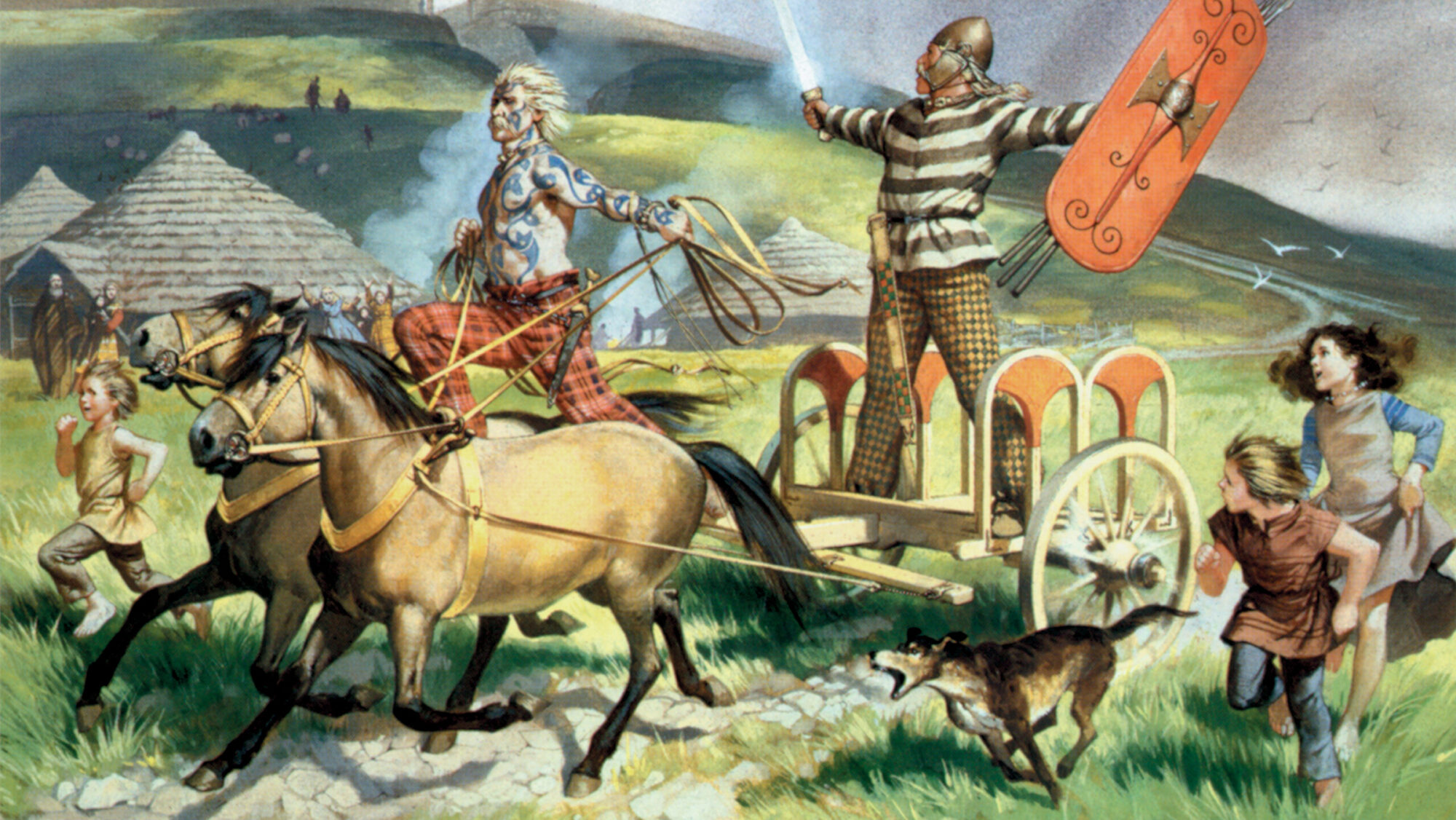
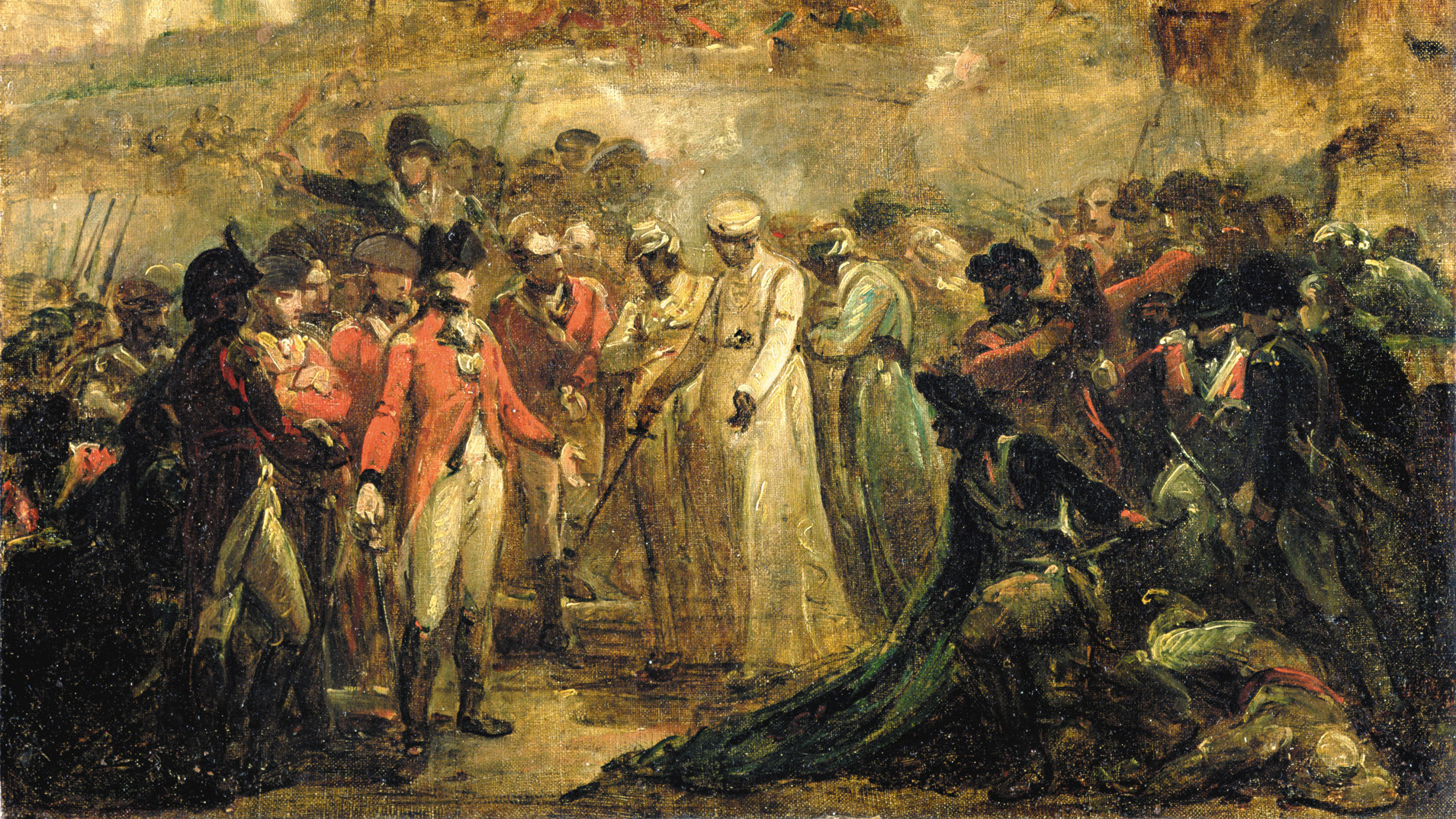
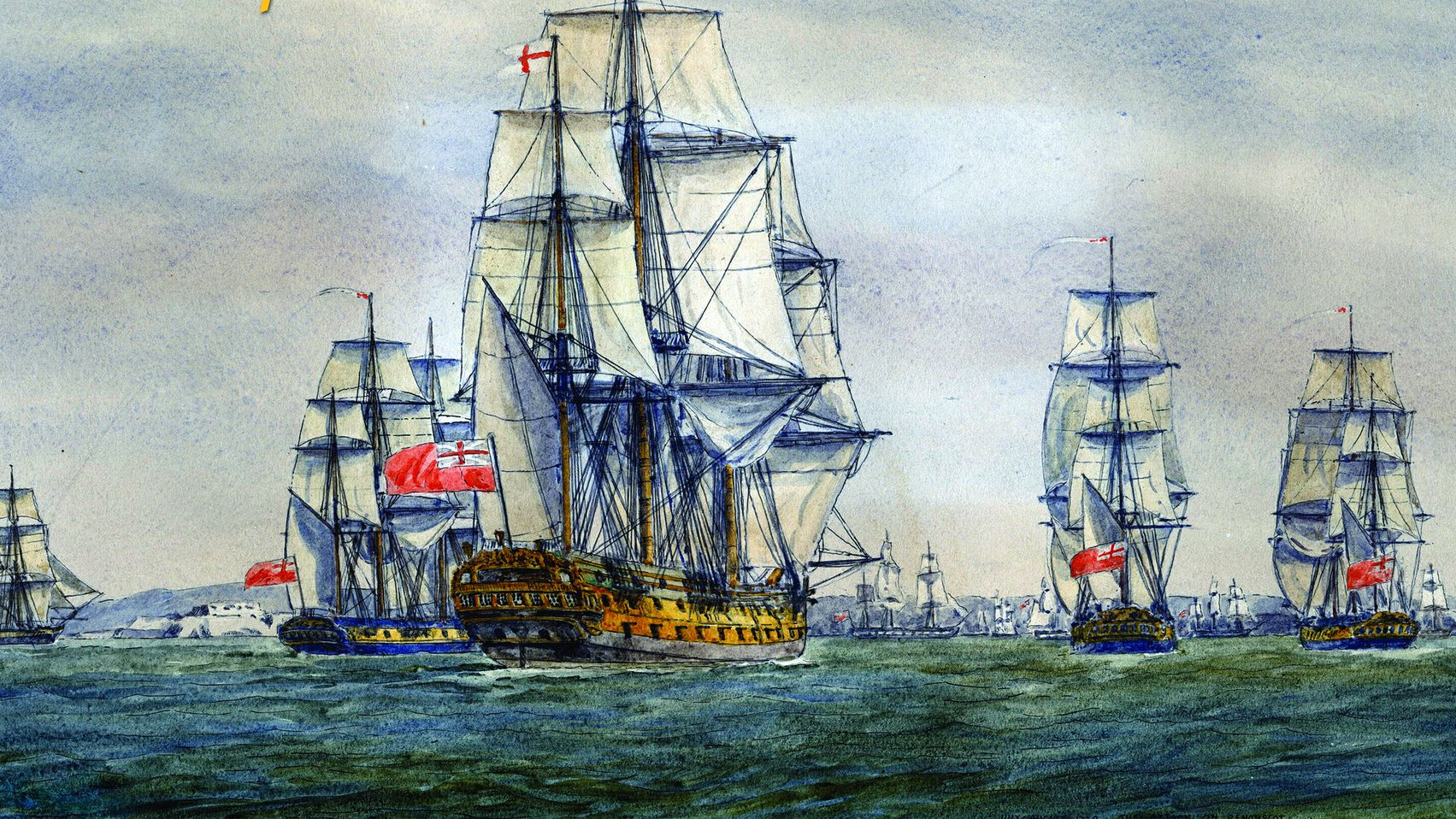
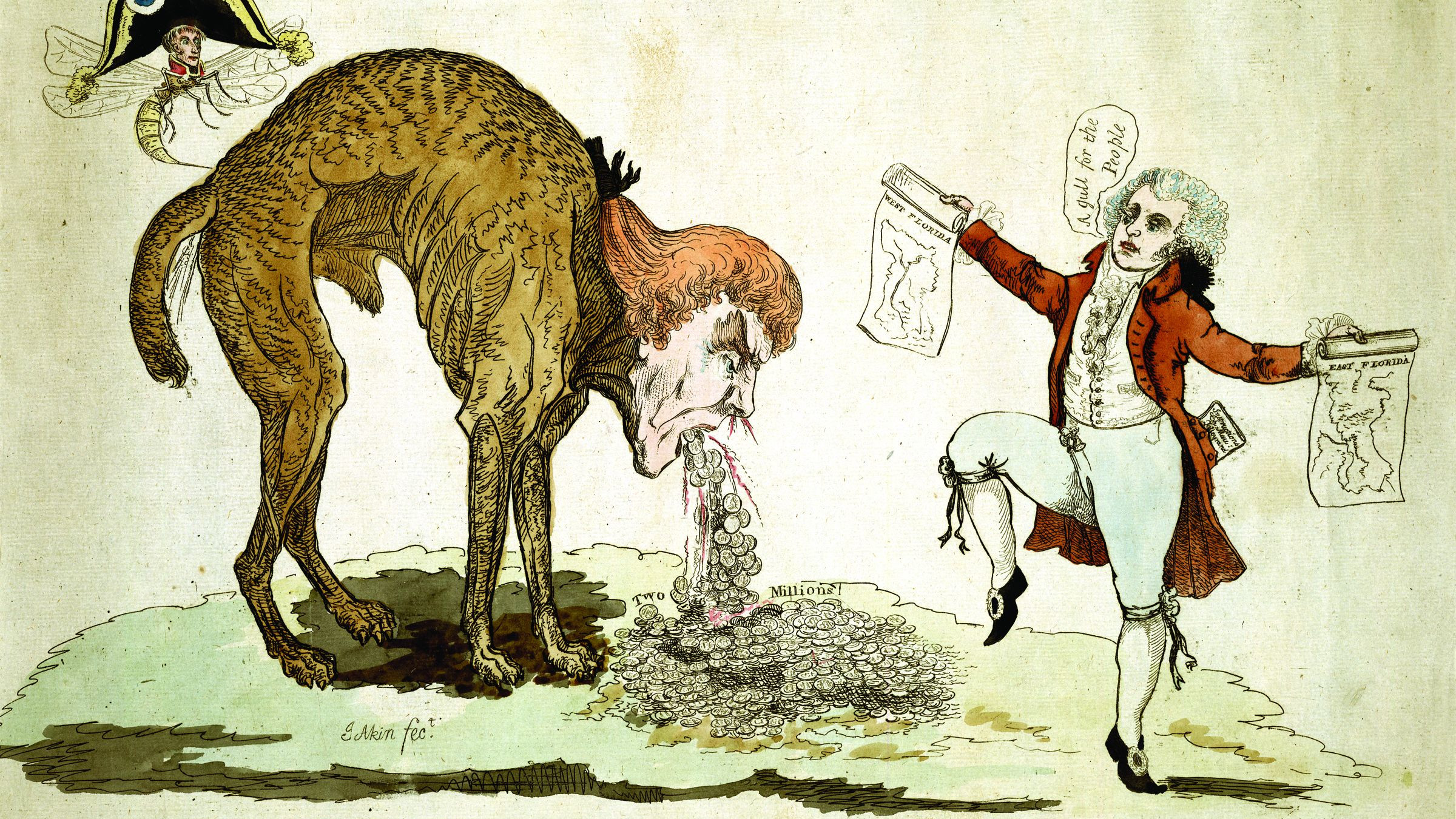
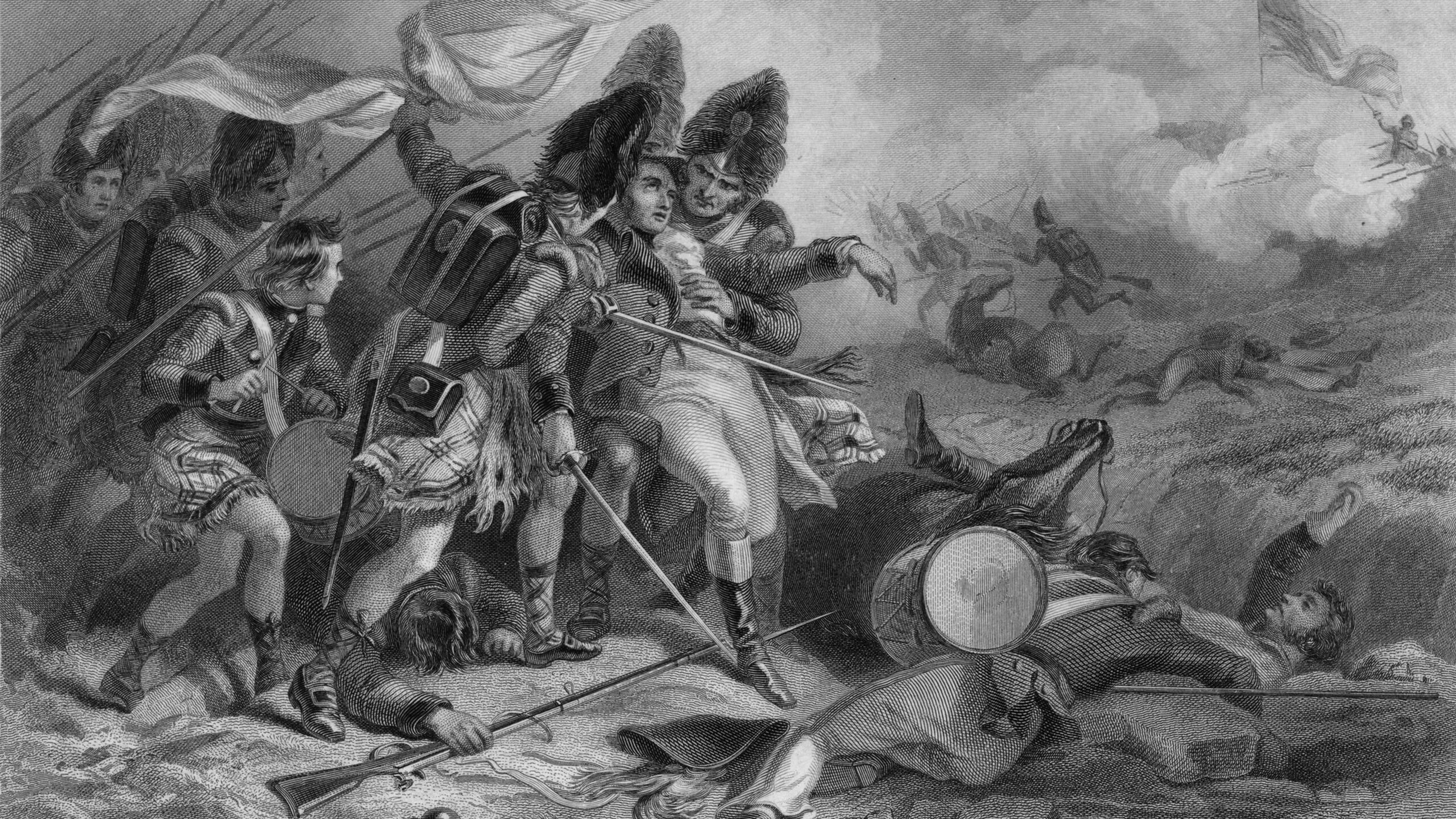
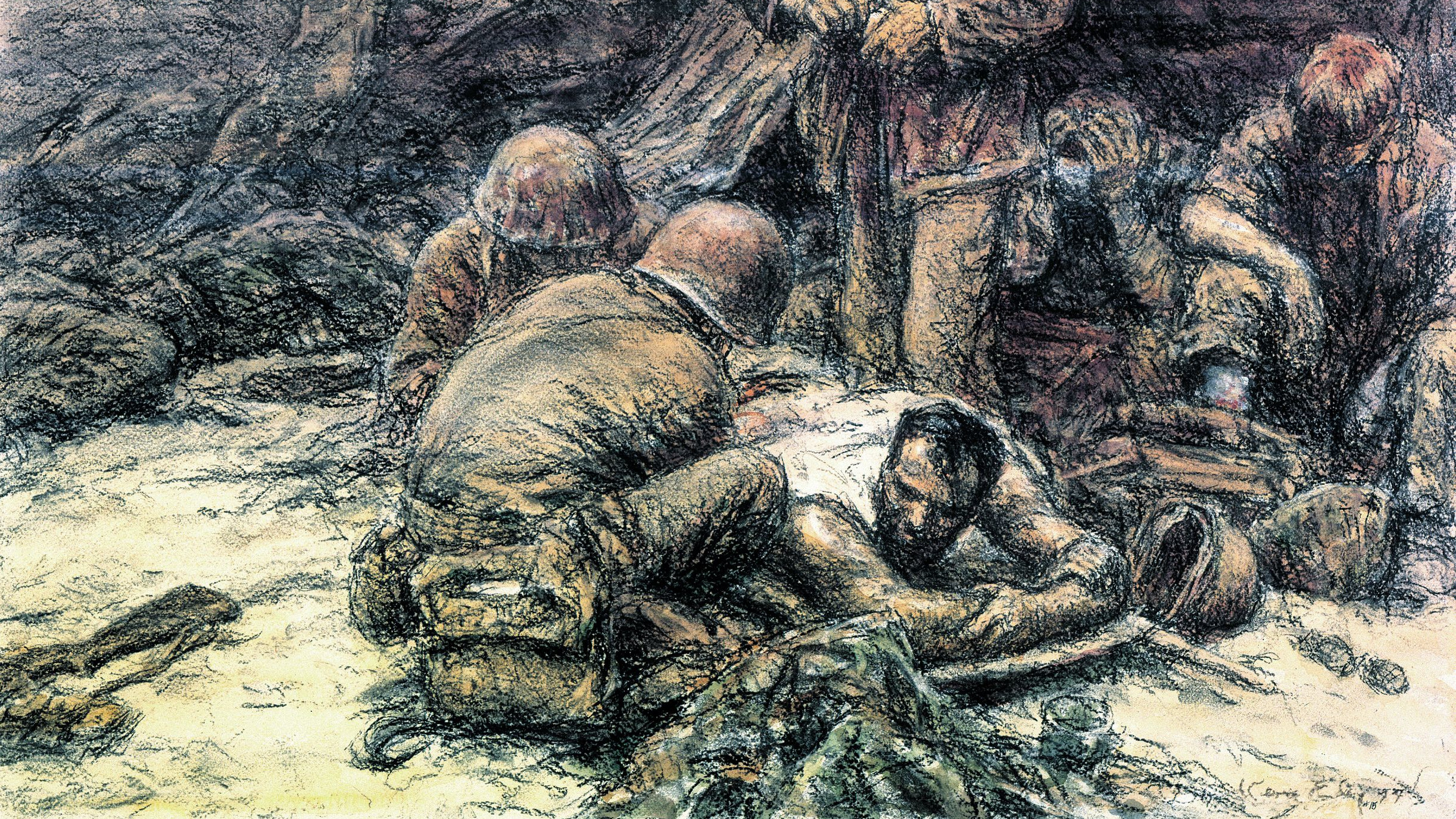
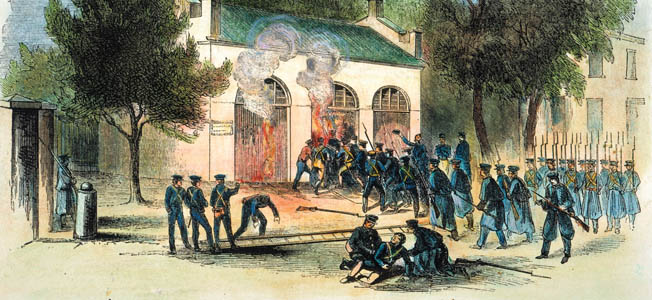
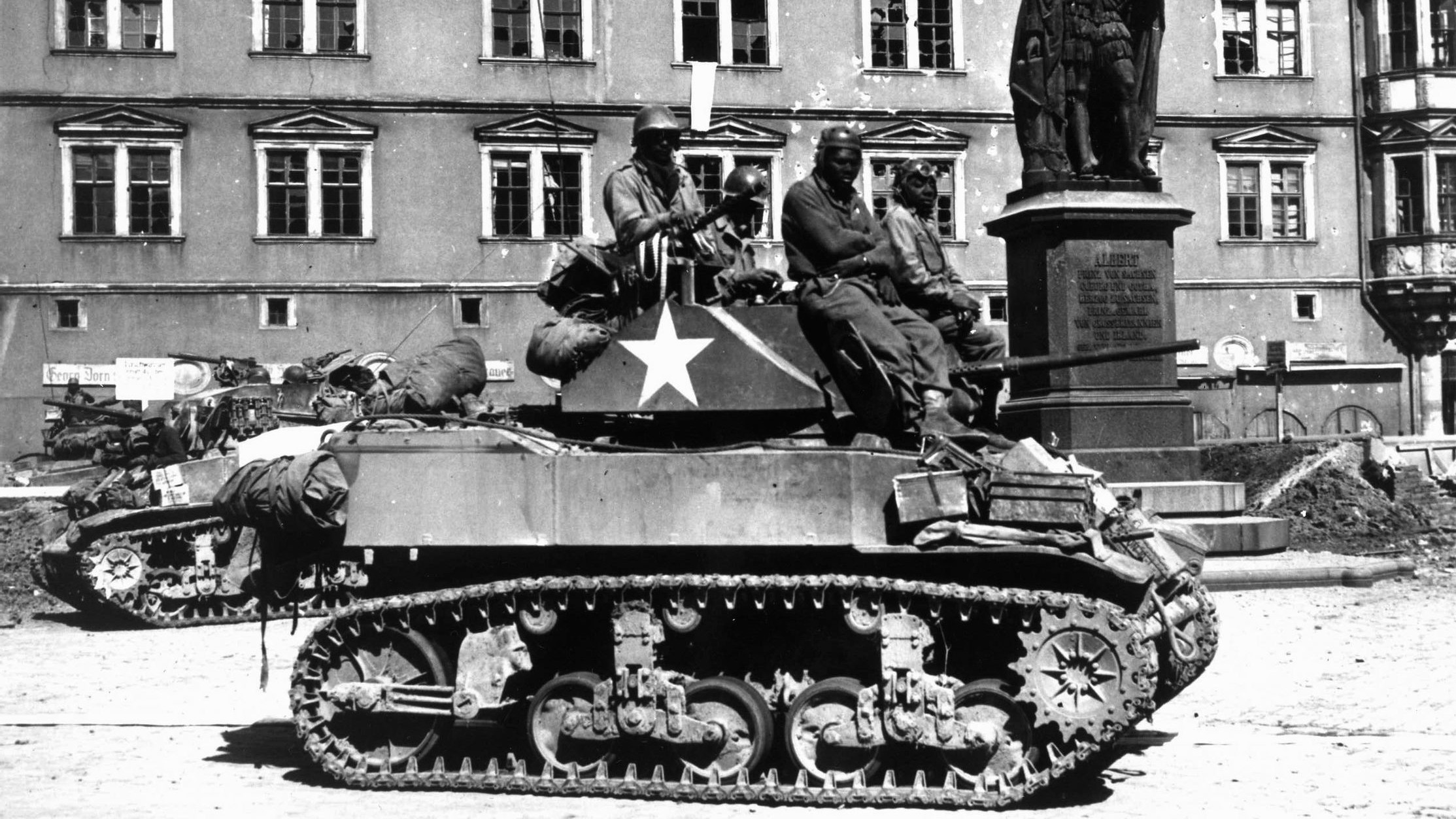
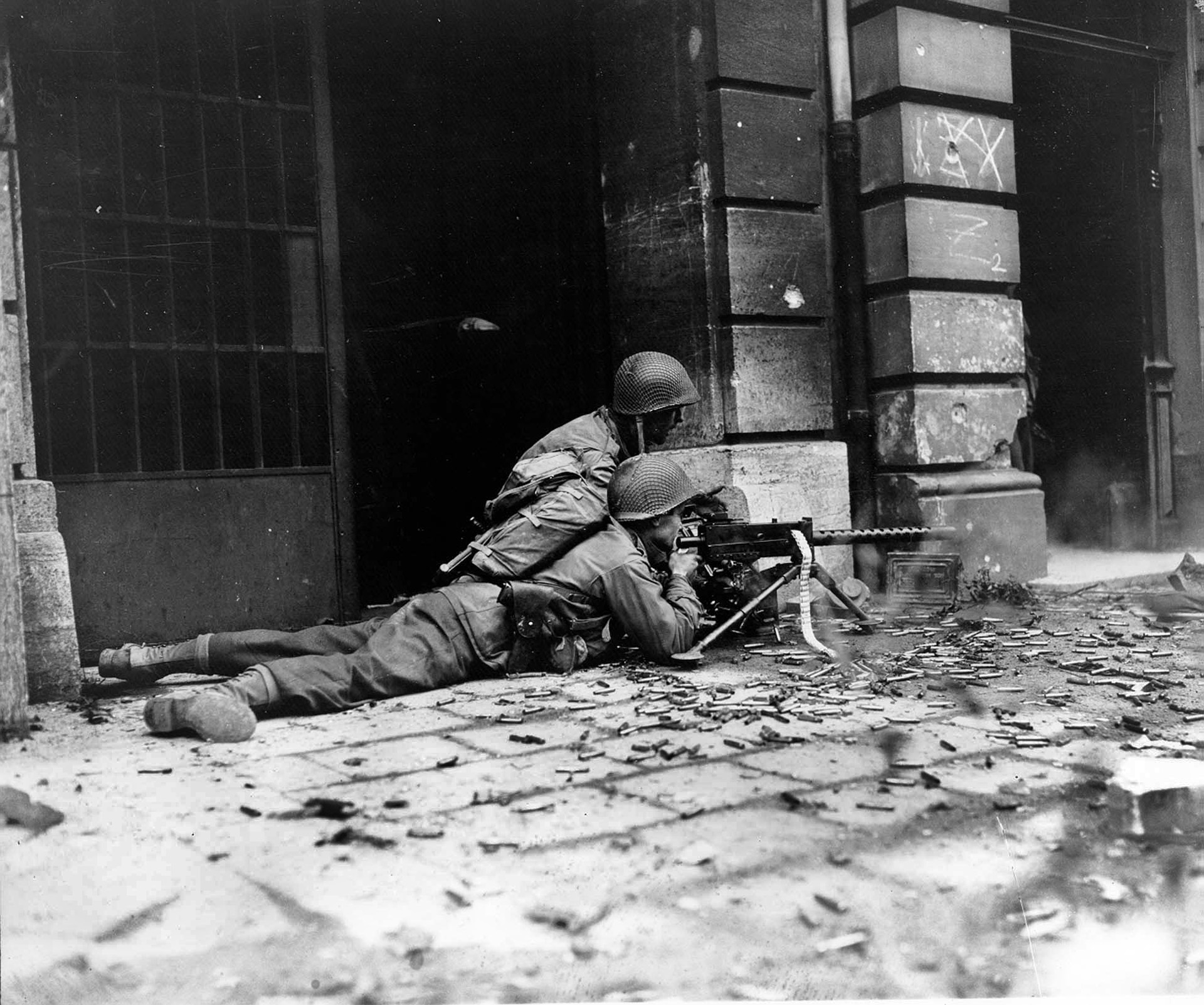
Join The Conversation
Comments
View All Comments